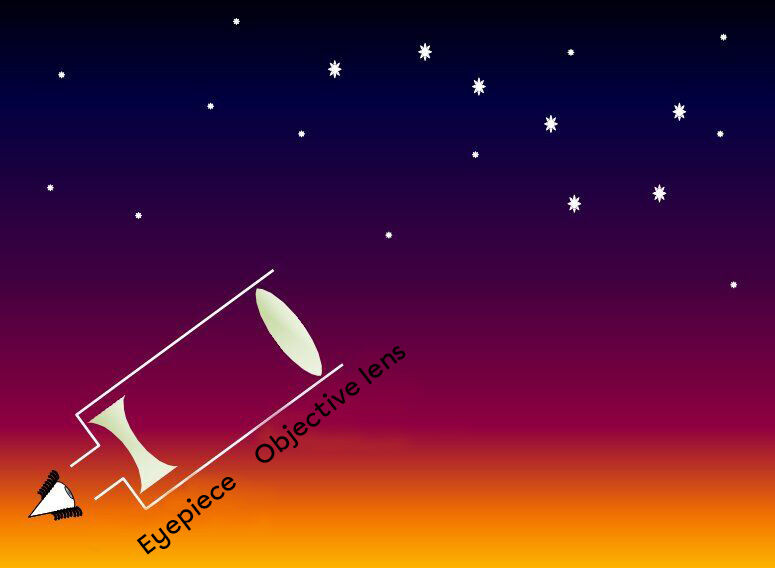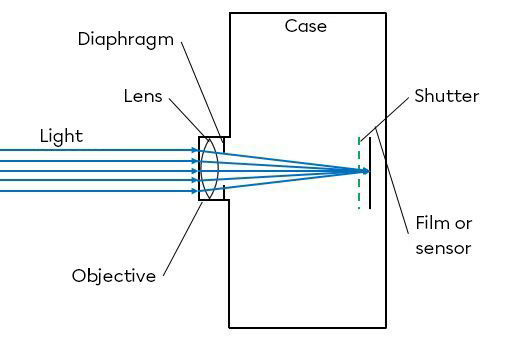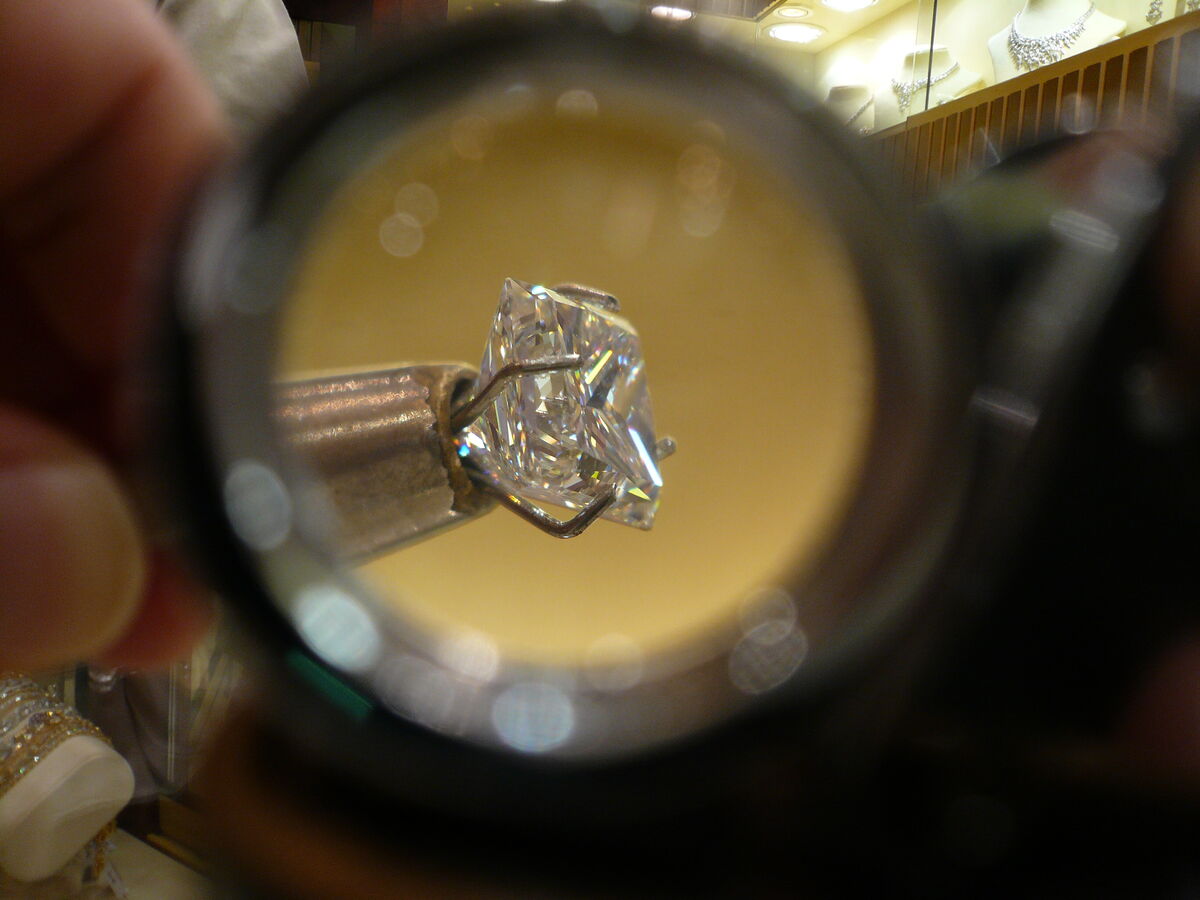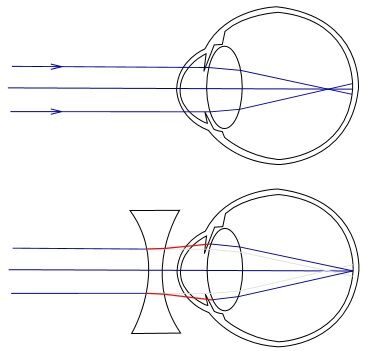Optical devices generally use mirrors and lenses to magnify the object to be observed. In most cases, a combination of several lenses, several mirrors or even a mix of lenses and mirrors is used to achieve maximum magnification.
When multi-lens optical devices are used, specific names are assigned to the lenses according to their position.

The eyepiece, like the objective lens, can be formed by one or more lenses.
-
The eyepiece is the lens or lens system placed near the eye.
-
The objective lens is the lens or the lens system placed in the direction of the object to be observed.
The magnifying glass is an optical device that provides a magnified image of an object.
A magnifying glass uses the convex lens properties, or a convergent system. When the distance between the lens and the object is smaller than the focal length ( |d_{o} < l_{f}| ), a virtual image larger than the object is produced.
The magnifying glass is used in many fields. It is used, for instance, to inspect the quality of minerals collected in mines.
Glasses are optical devices made up of lenses allowing, among other things, a correction of vision disorders.
Vision disorders can be corrected using different lenses depending on the disorder to be corrected.
Myopia (nearsightedness) is a visual defect in which a person does not perceive a clear image of distant objects. By using a diverging lens, the light rays can be directed directly towards the retina.
The camera is an optical device for capturing an image of a real object.
When the shutter button of the camera is clicked, a shutter present in the housing allows the light that passes through the lens (the equivalent of the lens in the eye) to reach the sensor, which then provides a sharp image. To determine how much light passes through, a diaphragm controls the amount of light, acting as the iris of the eye.

The choice of lens or lenses used in the objective is decisive. A lens system with a larger focal length will give greater magnification but a narrower field of view. However, a lens system with a smaller focal length will produce a smaller magnification, but a larger field of view.
Binoculars are a magnifying optical device used to observe distant objects.
Binoculars are made up of two symmetrical glasses mounted in parallel. The light enters the binoculars through the objective lenses (formed by lens systems producing a converging assembly). The image seen in the binocular is magnified through eyepieces. These act like magnifying glasses.
In the image below, the light ray is represented by a dotted line. Element 1 is the objective lens, elements 2 and 3 are prisms allowing the movement of light, and element 4 is an eyepiece.
A telescope is an optical device enabling light to be captured and magnified. It also increases the apparent size of the objects to be observed. The telescope allows, among other things, someone to see celestial objects difficult to perceive or invisible to the naked eye.
There are different types of telescopes. The first, based on the work of Galileo, is shown in the first image of this concept sheet. This telescope consists of an objective (convex lens), an eyepiece, and a converging lens. The rays of light arriving from space initially pass through the lens. Since this lens is converging, the light rays will tend to come closer together and to focus towards a single point, the focal length. However, before reaching the focal length, the eyepiece diverts the rays so as to make them parallel to the eyes in order to allow a clearer and sharper view of the object. To achieve this, the eyepiece must be placed between the objective lens and its focal length, which ensures that the image is not inverted.
However, another scientist, Kepler, worked on Galileo's model by changing the diverging lens to a converging lens. In addition, he moved this lens behind the focal length of the lens. Thus, the light rays passing through this type of telescope converge while passing through the first lens, intersect at the focal length, and then are refracted in parallel while passing through the second lens.
The microscope is an optical device consisting of an objective lens and an eyepiece that allows the image of a small object to be magnified so that it is perceptible to the human eye.
A microscope, similarly to other optical devices, consists of an eyepiece and an objective lens. This lens is placed very close to the object to be observed so that the image is clearly magnified. To achieve this, it is necessary to use a converging lens with a very small focal length. The light rays then travel to the eyepiece, which further magnifies the light by acting like a magnifying glass. The resulting image will therefore be virtual and inverted.



